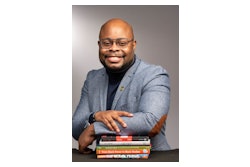The New Year has seen an urgent call for accountability in higher education with the much anticipated release of Academically Adrift: Limited Learning in Higher Education, written by sociologists Richard Arum of New York University and the Social Science Research Council and Josipa Roksa of the University of Virginia. The book, released Tuesday and drawing a great deal of media attention in the days following, is based on a longitudinal study that draws primarily on results from the Collegiate Learning Assessment (CLA).
The CLA is just one of many tools education researchers use to assess student learning over the college years. In the case of Arum’s and Roksa’s work, students at 24 colleges and universities nationwide took the CLA three times over four years of study. The most prominent findings of the study reveal a student body that is reading less, writing less, and studying less than just two decades ago. According to the authors, 45 percent of students “did not demonstrate any statistically significant improvement in CLA performance during the first two years of college” and 36 percent did not demonstrate significant improvement between freshman and senior year.
At a time when we’re asking more of our institutions of higher learning, it is also time to stop talking about reform and start making meaningful progress. And if there is one disciplinary area that should be leading the charge, it is that of science, technology, engineering, and mathematics (STEM).
STEM has an enormous opportunity to showcase its offerings to students and to society at large. The president is behind scientific innovation; many states are forming collaborative STEM networks between business, K-12, higher education, and urban communities; and foundations are pouring hundreds of millions of dollars into science and math education at all education levels.
Those inside the STEM community know how important scientific advancement is to the sustainability of our nation and world–for advances in health care and disease prevention, for environmental protection and disaster recovery, for computing and technological development, and for urban infrastructure and agronomic sustainability. The list goes on.
In short, there could not be a better time for the STEM community to help lead a national movement that seeks to advance student learning and other measureable outcomes like workforce advancement.
A first priority for STEM departments is to better communicate the importance of STEM fields to undergraduate students, especially in the freshman and sophomore years. Faculty need to take better stock of recommendations for improving undergraduate teaching practices, or pedagogy, which has been afoot for decades. This includes practices that help make STEM meaningful for students by showcasing the real-world applicability of STEM early on (i.e., in the first year of undergraduate study).
Just as critical is getting middle and secondary school students engaged in STEM so that they arrive to college with scientific career aspirations. This means engagement with K-12 on the part of STEM departments to ensure that students are informed and prepared to enter STEM majors when they arrive to campus. Although Arum and Roksa’s work is focused on learning gains in higher education, the foundation for advanced math and science learning must be laid as early as middle school.
Yet asking the national STEM faculty body to take leadership will require something more than a desire to showcase their respective disciplines. It will require institutional leadership to make student learning in STEM a priority.
Faculty members require tangible (i.e., contributing to tenure) rewards for excellence in teaching and similar support for bringing in research grants focused on STEM education, including curriculum development and the provision of undergraduate research opportunities.
Deans of schools of science and engineering must also be granted the proper resources and rewards to attempt all of the following:
- Regular assessment of teaching across the discipline with a reward structure that promotes excellence as measured by student learning outcomes
- Interventions and training for professors of all experience levels
- Required instructional training for all graduate students, with an emphasis on pedagogies for diverse learners
- The formation of interdisciplinary teaching and research teams (the “science, technology, and society” major set a wonderful example)
- Collaboration with schools of education for K-12 math and science teacher training and professional development
- K-12 outreach programs that target underrepresented populations
While this is not an exhaustive list, it highlights some of the most critical needs. It should also be noted that institutions have the experience and capacity to do all of these things, but they must be made a priority.
If we are to make any progress on undergraduate STEM education reform for the learning outcomes that our students both deserve and require it needs to start from the top and the bottom of the institutional hierarchies. Presidents, provosts and deans must make this commitment and junior and senior faculty must make it a priority. The makings of this movement are before us. Now it is time for leaders to come forth and act.
Lorelle L. Espinosa, Ph.D., is the director of policy and strategic initiatives at the Institute for Higher Education Policy, a Washington, D.C.-based independent, nonprofit organization that is dedicated to increasing access and success in postsecondary education around the world.


















